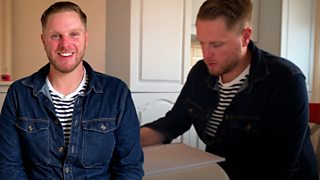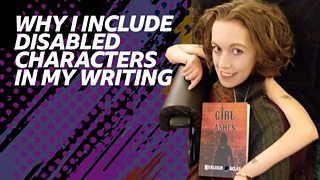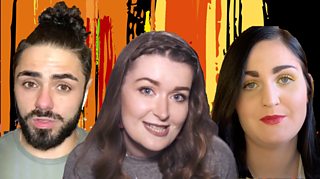Taking your ideas from shortform to midform – a chat with filmmaker Sarah Grant
Sarah Grant started as a contributor for Βι¶ΉΤΌΕΔ The Social in 2019, and has since created comedy for Βι¶ΉΤΌΕΔ Short Stuff and the Βι¶ΉΤΌΕΔ Scotland channel, as well as had her work showcased at film festivals.
Her latest piece for the Βι¶ΉΤΌΕΔ, Pitching, shows nine scenes simultaneously to explore the narrative of a relationship breakdown in a creative way.
We spoke to Sarah to find out more about her creative process, and to get her tips for other writers and filmmakers hoping to move from shortform to longer form content.
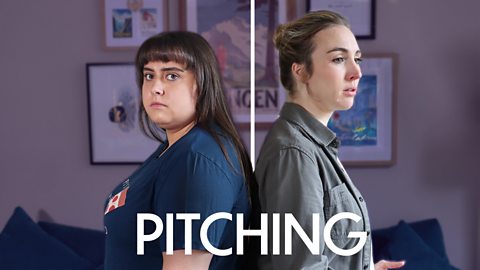
Pitching
A relationship breakdown told through scenes from the past and present simultaneously.
Tell us a bit about pitching
Pitching was a concept that lived in my head for a few years. I could see it clearly, but I found it very, very difficult to put into words or explain the multi-screen element of it. The one shot, multi-camera aspect felt to me kind of like theatre, and kind of like CCTV, but also I wanted to make it for film or television.
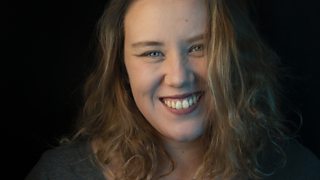
One thing that really inspired me was the music video for Get Out by Chvrches. They did a CCTV-style, nine screen piece and it was very slow and very moving. What I noticed was every time I watched it something would catch my eye that I didn’t see that last time. That’s what I really liked about it.
That’s also what I really like about theatre. If you go and you watch the whole stage versus if you go and watch one particular character, then you get two completely different experiences. I really liked the idea of trying something screen-based where you could watch it multiple times and get a different story every time. So that’s where I started with Pitching.
I’m really grateful to have had the chance to make Pitching because it was experimental, it was queer, and it was taking a risk. I love that The Social does that. I’m a working-class creator and there’s very little space in my life to just go out and do things for the sake of doing them. Offering the support and the platform, that means so much to me personally and our industry as well.
How did you physically go about shooting Pitching? Talk technical aspects with us
The idea is a relationship that’s over and someone trying to contextualise it and reconcile it, but then having multiple memories from different points, some good, some bad all playing in their head at the one time.
It was really hard to communicate (the concept) to the cast and crew but they trusted me
Because it was all one take, I started with the monologue as the grounding piece for the rest of the shots. I went into it being like, imagine you were trying to sum up a relationship that was like years long in one phone call, you wouldn’t be able to explain the whole very well but you could dip into little stories that make it important. I was kind of trying to visualise that.
I filmed the monologue and then timed it. There was a week between filming the monologue and the rest of the footage, where I listened to the monologue over and over again, and then I knew what I wanted to happen on different screens at different times.
I wrote a beat sheet for each shot and we worked to a clock. We’d be filming the bottom lefthand corner, then I’d be like, this person goes to this door at this point, then this happens then, and I knew that it would all go together. It was really hard to communicate to the cast and crew but they trusted me. It all ended up working in the edit.
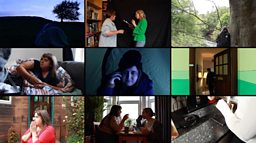
What are the main differences to you as a writer going from shortform to midform? What are you thinking about?
I think for a shortform sketch, it’s a joke. It’s a set-up and an ending; it’s a one-two movement. But for midform, it’s a one-two-three. There must be a beginning, middle, and end – though it doesn’t have to come in that order. It must be a self-contained story in a world, as opposed to a moment in time somewhere.
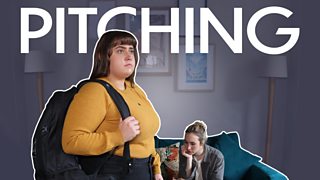
You might go into midform like, I have great jokes, but you also have to know why are we starting your story, where we are starting it and why it end where it ends. And that can be really difficult and quite intimidating to come up with.
I think that if you kind of already have the idea for whatever it is – the story, the joke, the character – then you picked it for a reason. Now it’s spending a little bit more time in development. Not just ‘that’s going to be the funny moment on screen’, but being like, ‘why is that funny? Why are they funny? Why are they important? And why are we noticing them now?’
It’s really easy to try to fit too much or not enough in, so trust that you know how to show your characters in a good light because you’ve done it in shortform, but in midform focus a bit more on your world and where you start and finish.
Sarah’s tips for taking your ideas from shortform to midform
Show that you have somewhere to go - if you start in shortform with a particular character, idea, or tone of voice, ask: what else can I do with this? You need to be able to build on your successes. Do what you do well already and land it in this bigger world.
If you take your work seriously, people will see that and know that you are someone to invest in for the future
Think both big and small to find the ‘core nugget’ of your idea - I like to think if I had £100m to make an epic feature film about this story, what would it be? And if I had £10 and an afternoon what would it be? If you had to kill everything else and just had one person in front of a camera for thirty seconds, could you still get the story and idea across? If you have a handle on big and small then you know your midform is tight.
Never underestimate the value of your voice as a presenter as well as a creator - I worked for six years behind the camera trying to get somewhere as a writer/ director, and things didn’t really start to go well for me until I started to put myself in front of the camera. There’s power in people recognising you; being able to go: ‘you’re that person from that thing’, and that starts up conversations easier.
Know that you are someone that is worth being taken seriously and take your own work seriously - with The Social it’s that first step into the Βι¶ΉΤΌΕΔ and it’s really easy to come in starry-eyed, but you’re working with them for a reason. If you take your work seriously, people will see that, recognise that, and know that you are someone to invest in for the future.

